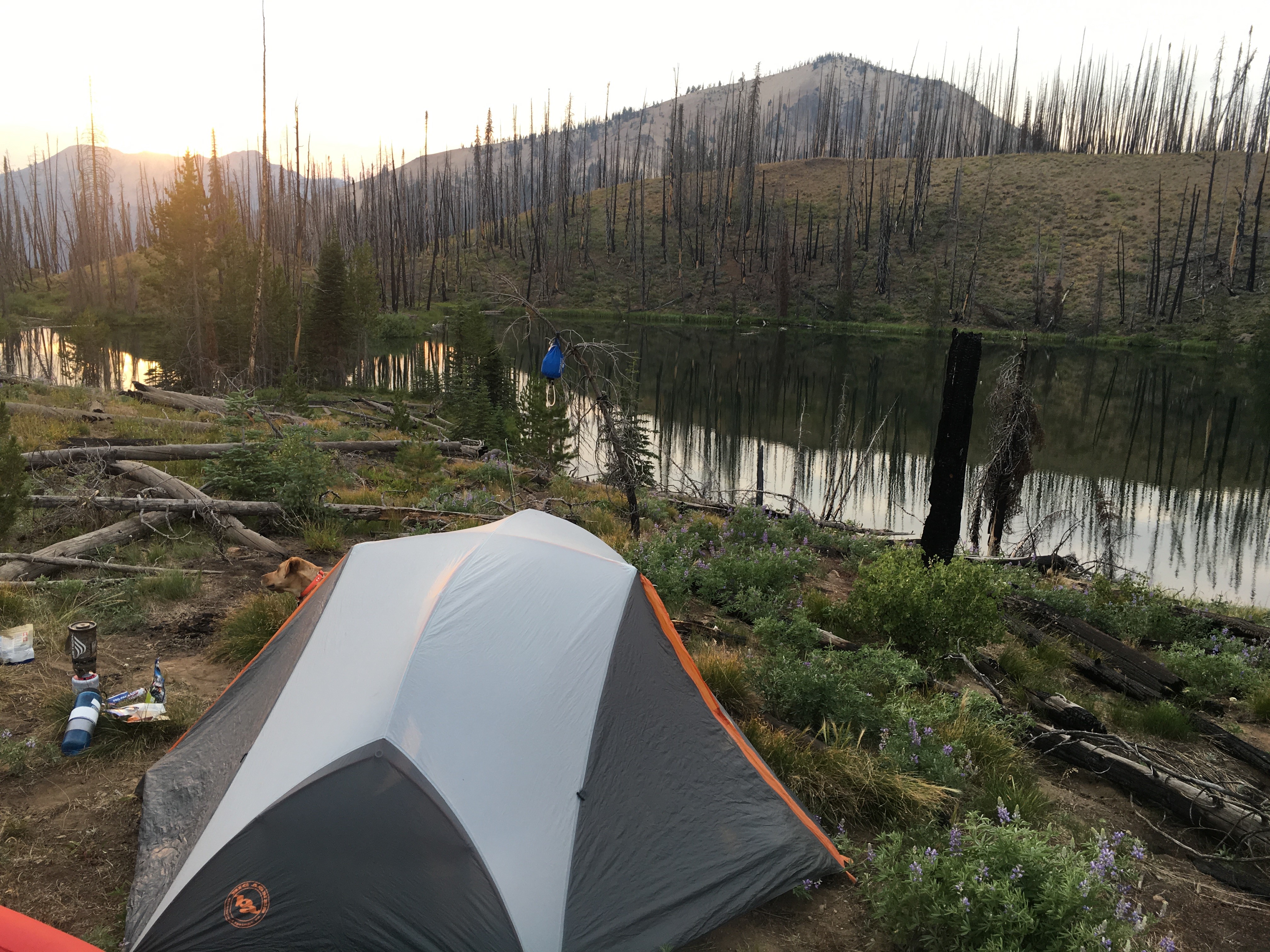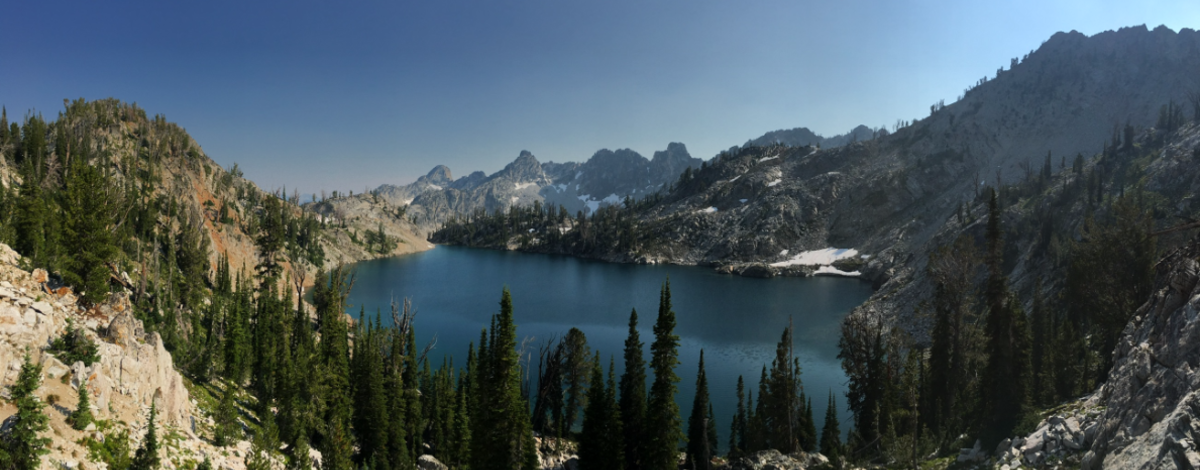
High Mountain Lake fishing ranked as Idaho’s second most-favorite fishing activity in a randomized angler opinion survey conducted in 2017 (river/stream fishing was #1). It's no surprise that Idahoans love high mountain lake fishing, as Idaho has some of the most spectacular high mountain lake fishing in the world. Although the accessible season is relatively short (late June through late October) many of us die-hards never stop thinking about fishing high-country lakes. Late fall/early winter is a great time to start planning for your next high mountain lake fishing adventure – especially in terms of scouting and purchasing new gear.
Gear Considerations
First and foremost, take good care of the equipment you have – clean, patch, and waterproof your gear, and if some of your gear needs replaced, prioritize your wish list for the upcoming year. You can find great deals on new gear in the fall/winter as retailers are discounting the previous years’ summer items to make room for new winter inventory. Here are some gear items to keep an eye out for during the ‘off-season’- perhaps even some ideas to add to your holiday gift ‘wish list’.
Backpacks: 
If you’re planning to do overnight trips, you’re definitely going to want a really comfortable pack. For multi-day trips (to get into those hard to reach lakes - where the big fish are) you’ll likely be carrying 50 pounds or more. Invest in a pack with a quality suspension system to lighten your load. When you try on packs at a retail store, have a friend grab the back of the pack and put some body weight on it. If the pack has a good suspension system, you’ll hardly feel their weight. Make sure the hip belt feels good too – some companies have an option that allows you to custom mold these to your hips. Most of your pack’s weight will be distributed to your hips while you’re hiking, so you’ll be much happier if your pack has a comfortable hip belt. Lastly, you’ll have to decide how large of a pack to use. For multi-day trips, a pack in the range of 70 to 100 liters (pack volume) will be all you’ll need. The larger the volume, the more you can pack. Keep in mind - just because you have a huge pack doesn’t mean you always have to fill it!
Tents: 
Ultra-light tent technology has come a long way, and continues to get better. For that reason, you can find some great deals this time of year on previous year's tent models. Some of the nicest tents for summer high lake trips, in my opinion, are constructed almost entirely of bug mesh. One of the best things about camping in the Idaho alpine in July or August is seeing the amazing sky at night – but one of the worst things is the bugs! These mesh tents give you the feeling of sleeping under the stars, with the security of keeping the mosquitos out. Mesh is also a really light-weight material, so you can easily find one-person tents weighing in at less than two pounds. Look for a tent that offers some decent vestibule space when the rainfly is on. You’ll be glad you have it to keep your boots and pack dry if a rainstorm blows through.
Boots: 
Don’t ever get new boots just before backpacking season! A good pair of hiking boots will take some time to break-in, and you don’t want to be breaking them in on an eight-day trip to the backcountry. Buy your new hiking boots in the fall/winter, giving yourself plenty of time to break them in with short hikes and daily wear before the summer backpacking season kicks in. Make sure your boots have good ankle support and are comfortable. Comfortable feet are extremely important. However, be aware that boots that are soft and extremely comfortable at first wear are likely not durable enough to last extensive use. Durable boots will be stiff at first, and will require some time to break them in. Lastly, do yourself a favor and purchase some high-end insoles for good arch support. Don’t underestimate the importance of comfortable feet.
Water filters: 
There are tons of options on the market in terms of water purification, which can make searching for new gear a little overwhelming. My preference is a gravity-type system. This system involves filling a bag with untreated water, and allowing gravity to push the water through a filter and into your treated water reservoir (i.e. bladder or bottle). Rather than sitting there pumping your water while being attacked by bugs, or dealing with the nasty taste of Iodine in your water, you can multi-task very easily (maybe even catch a few fish…) while your filtration system is doing the work. I recommend carrying at least three liters worth of water storage capacity.
Packrafts: 
Packrafts are certainly not a necessity, but are becoming more and more popular among avid high mountain lake anglers. For lakes that have a lot of littoral area (the shallow perimeter of the lake), a packraft can help you get to deeper water and closer to the fish, and can significantly increase your catch rates. There are several companies producing quality packrafts, ranging in price from a few hundred dollars to over $1,000. Weigh your priorities to determine which packraft is just right for you. In general, more durability means heavier pack weight. If you end up purchasing one of the ultra-light packrafts that are extremely small and weigh very little, be prepared to pamper it with tender, loving care. Invest in a solid patch/repair kit just-in-case.
e-Scouting

The fall/winter period can be a great time to do some scouting and plan your next high lake fishing adventure. There are some great tools available to help you out along the way. First and foremost is the Idaho Fish and Game ‘Fishing Planner’. The Fishing Planner can show you lake access, stocking history, fish species observed during surveys, and more! For instructions on how to use the fishing planner, visit this Tutorial . Look for lakes that are consistently stocked and where fish are frequently observed during surveys – these will be your best options for high catch rates. If you’re looking for big fish, get off the beaten path – the big ones are typically found relatively farther from trailheads. To learn more about how high mountain lake fisheries are managed in Idaho, watch this VIDEO. Finally, for a beginner’s high lake fishing guide specific to the Salmon Region, stop in and ask for one at an IDFG office in Nampa, McCall, or Salmon.
IDFG staff are in the process of producing content to develop a webpage specific to high mountain lake fishing. We won’t be giving away any secret lakes, but we’ll provide you with information to help you find those lakes yourself. Stay tuned for more blogs, news releases, and informational material related to fishing high mountain lakes in Idaho!
Previous blogs include:
Escape the summer heat by fishing in the mountains
How to fish Alpine Lakes: planning your trip length
Fishery gems of the Gem State: Mountain lakes
Upcoming blogs will discuss:
Alpine Lakes 101: Getting Started
Fishing Tips: tackle and techniques
Gear and Resource Recommendations
STAY TUNED!

